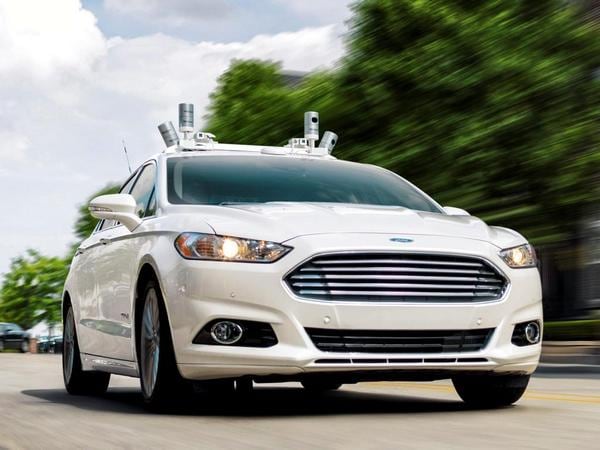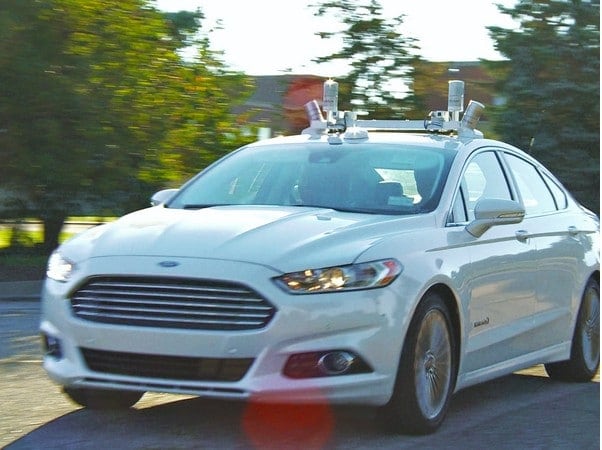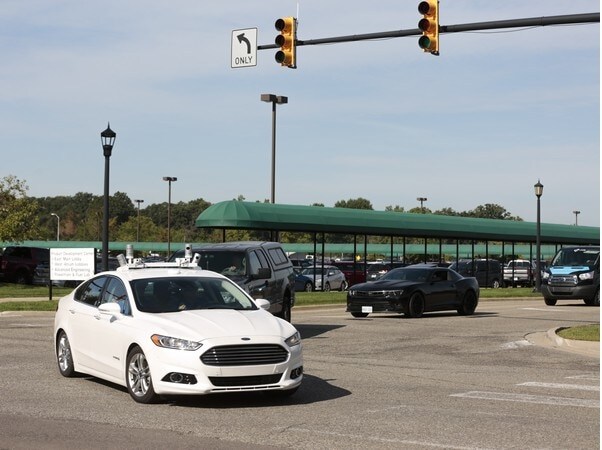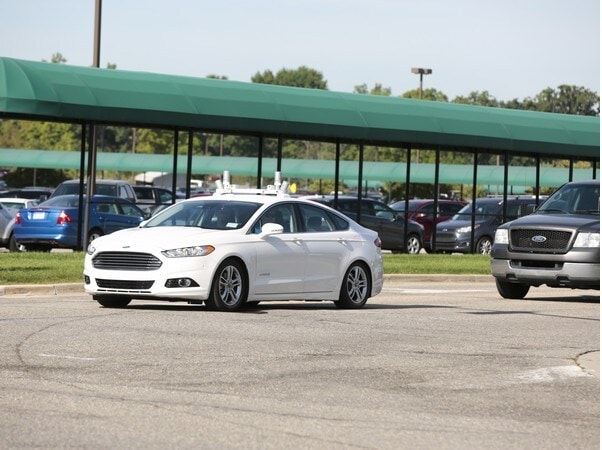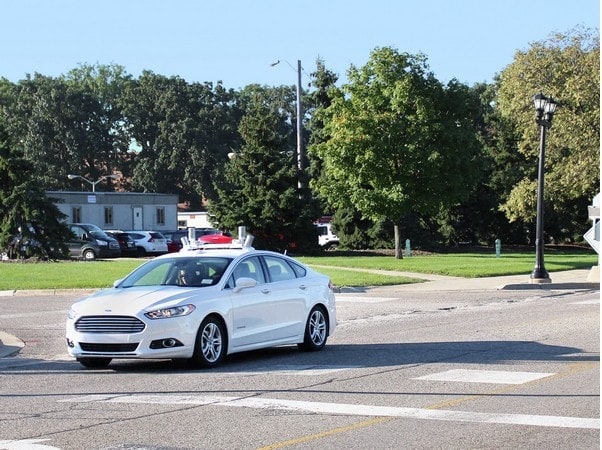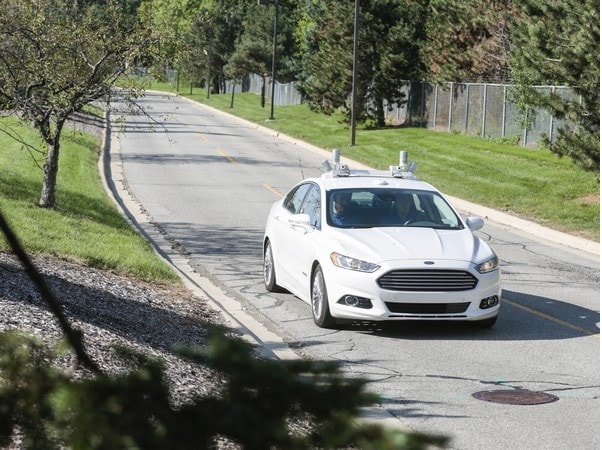It’s clear that autonomous vehicles—vehicles capable of operating with no human intervention of any kind—are on the near horizon, with several carmakers citing specific debut goals. And Ford Motor is among the development leaders.
Speaking this week at a series of Ford seminars on future trends, CEO Mark Fields said “we believe the next decade will be defined by the development of autonomous vehicles.”
To that end Ford has been working on autonomous technology since participating in the Defense Advanced Research Projects Agency (DARPA) autonomous vehicle challenge events of 2005 and ’07.
Today Ford has a small fleet of autonomous Fusion hybrids circulating around in Dearborn, Michigan, as well as Arizona and California. The Arizona and California cars are testing on Ford proving grounds, but the Dearborn group is operating on public roads near the company’s sprawling properties in the vicinity of corporate world headquarters.
Ford’s stated objectives for the program: First, putting its Dearborn fleet into employee shuttle service in 2018; second, putting Ford autonomous cars into urban ride sharing fleet service in 2021; third, making autonomous cars available to the general public by 2025.
Also: Class of 2017 – New Cars Ready to Roll
The Autonomous Pod
A measure of Ford’s commitment—and confidence in its technology—is the company’s plan for the car itself: it will no longer be a much modified Fusion. The driverless future Fords will have neither steering wheels nor foot pedals—true transportation pods.
What will they look like? That’s top secret, but it’s a safe bet they won’t look like the Fusion development mules, which are distinguished by an array of spinning Velodyne LiDAR sensors mounted on a roof rack.
The first sensors in the development program were as much as one meter high, but the tallest have shrunk to about half that size in the current generation and according to Greg Stevens, Ford’s Global Manager for Automated Driving, the next batch, due to go into service soon, will be “about the size of hockey pucks.”
LiDAR is a detection system similar in function to radar, but based on lasers (Light Detection and Ranging). It’s a key element in the autonomous menu, but not the only one. Others include high resolution color cameras, long-range radar (fore and aft), short-range radar (side to side), stereo cameras, and monocular cameras. Conspicuous by its absence is GPS positioning.
According to Stevens, “GPS is just not accurate or reliable enough.” The autonomous system has to accurate to within a matter of inches. A few feet could mean an accident. Stevens adds that the key element in the development program is massive computer power, both on board and also Cloud-based. Mega gigs. Many mega gigs.
Also: Kelley Blue Book Best Buy Awards of 2016
Hold the Excitement
Riding in the Ford’s autonomous mule is precisely what Ford wants it to be: a non-event. The demo rides included a “redundant driver,” to take charge in case of a problem, and an engineer in the front passenger seat with a laptop.
The automatic Fusion went about its business with no fuss and an abundance of caution. It not only recognizes pedestrians—Ford had a staffer staged along the route, crossing the street when the auto ride approached, but there were others as well—the car also recognizes pedestrian crosswalks and signs with the pedestrian icon.
It recognize traffic lights, traffic signs, and of course traffic. It will not exceed posted speed limits, and in right-of-way situations it’s likely to defer to the other vehicles. For example, if your autonomous Ford arrives at a four-way stop at the same time as another car, and you are to the right of the other car (thus entitled to right of way), your car will let the other car go first. Strictly non-confrontational. Very strictly. Road rage is exactly as likely as the car suddenly taking wing and setting a course for Minneapolis.
We asked the redundant driver and his front seat passenger if they’d had any untoward adventures in their development work, but of course that elicited no comments.
Basically, the autonomous Fusion behaved exactly as programmed: cautious, mannerly, and non-intrusive. Which is the idea.
Just one catch. A passenger can’t get into Ford’s autonomous car and tell it to drive to the nearest Starbuck’s—not unless that route is already in the car’s mapping memory. Everything this autonomous car can do is based on pre-mapped routes stored in the Fusion’s prodigious digital memory.
There’s sufficient route information in there to guide the car along the way even when inclement weather—e.g., snow—has obscured lines on the road. But the autonomous operation goes only as far as the car’s computerized mapping data.
That’s also true of the current test vehicles, it will be true of the Fusions that will shuttle Ford employees around the Dearborn campus, and it will still be true of the autonomous transportation pods that are scheduled to go into service in 2021. It seems reasonable to assume the versions scheduled to become available to anyone will be fully autonomous, but there’s a lot of development between then and now. And pricing is anybody’s guess.
Autonomous vehicles would seem to make sense in dense urban markets. Ford seems to be making solid progress toward its goal, but there’s a lot of wait-and-see between then and now. Nevertheless, we can make one prediction with absolute confidence: fun-to-drive will not be part of the equation.
